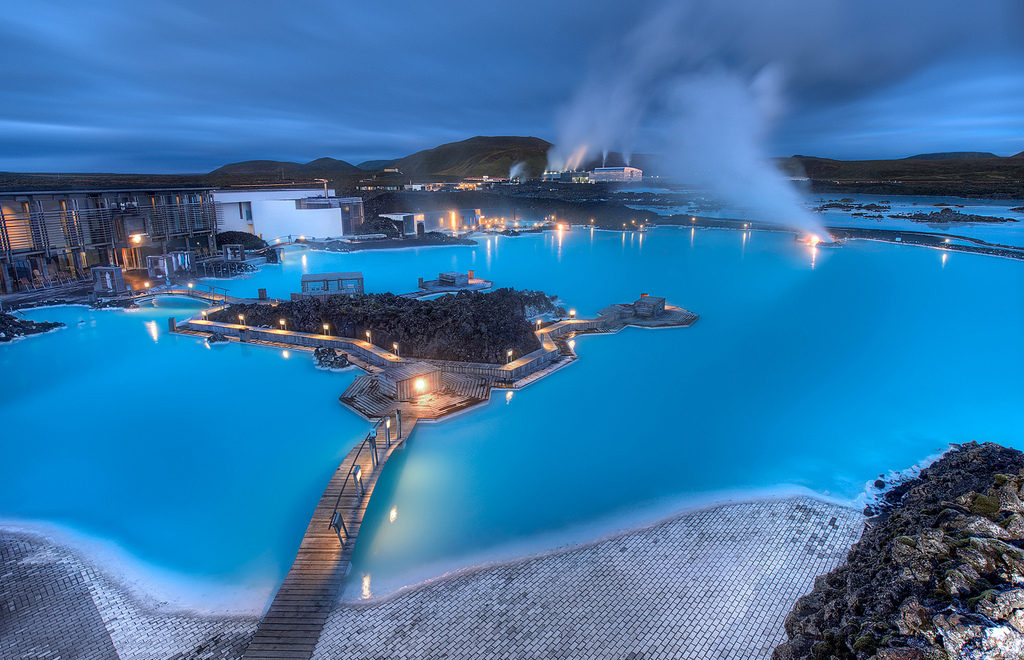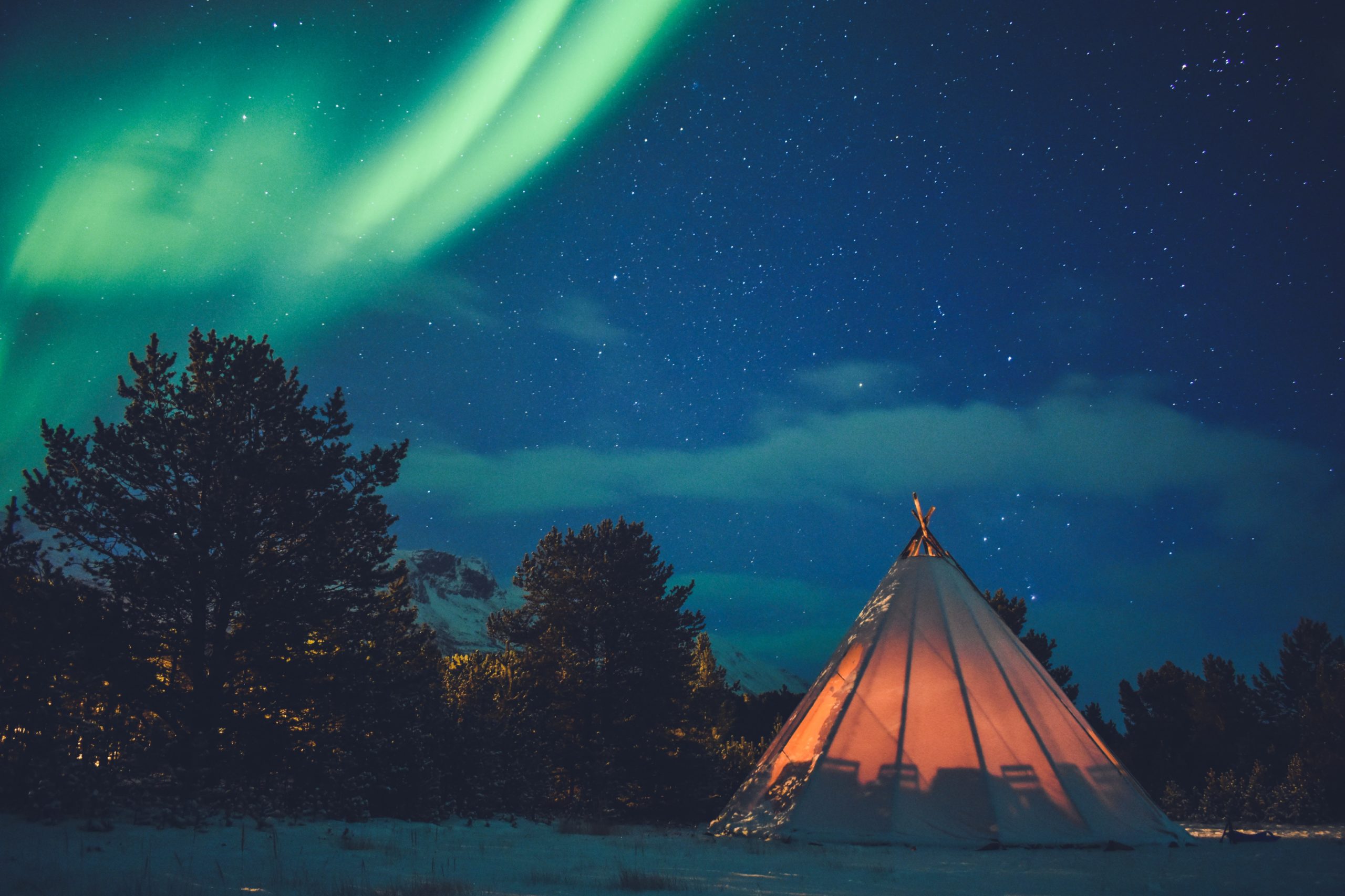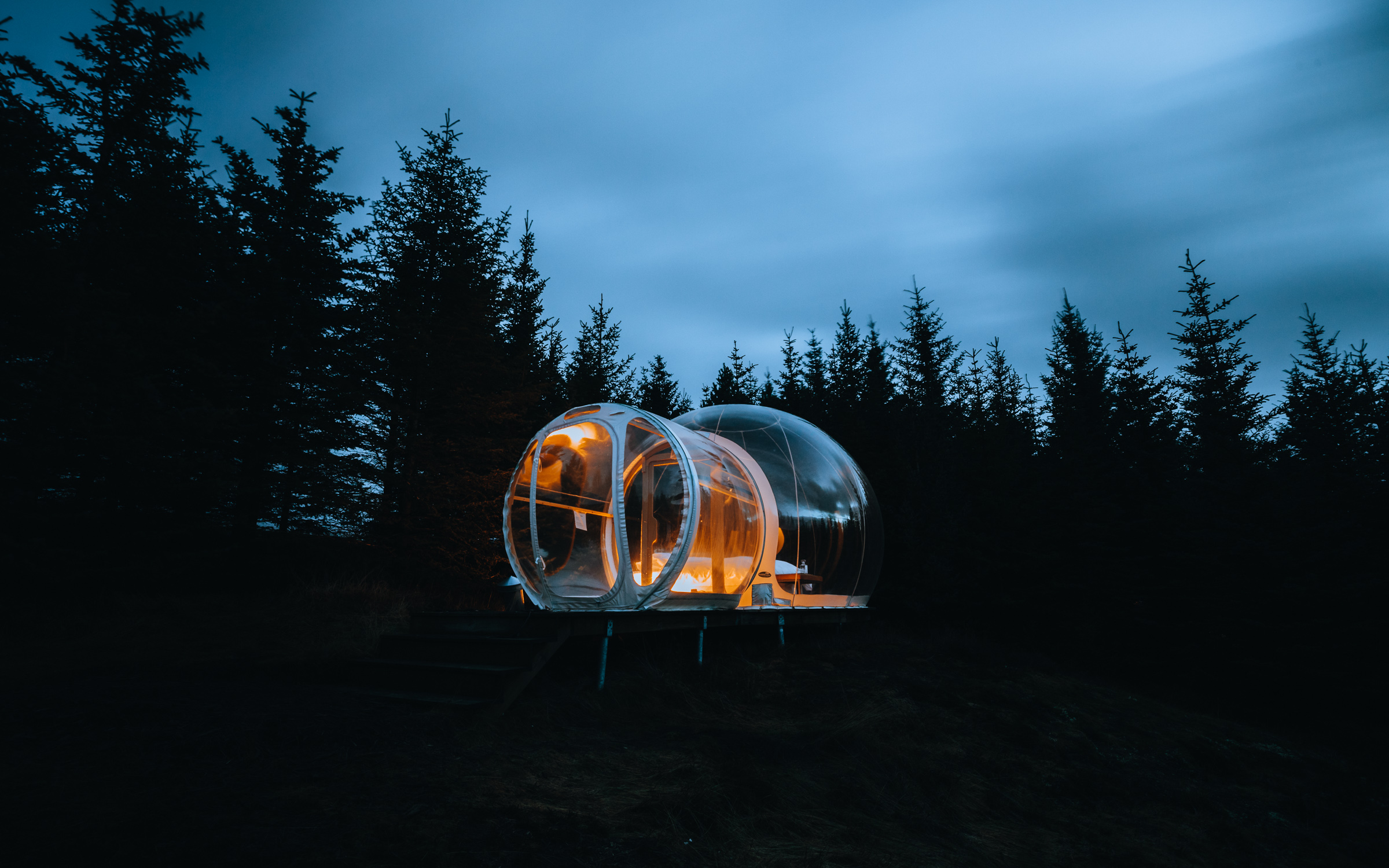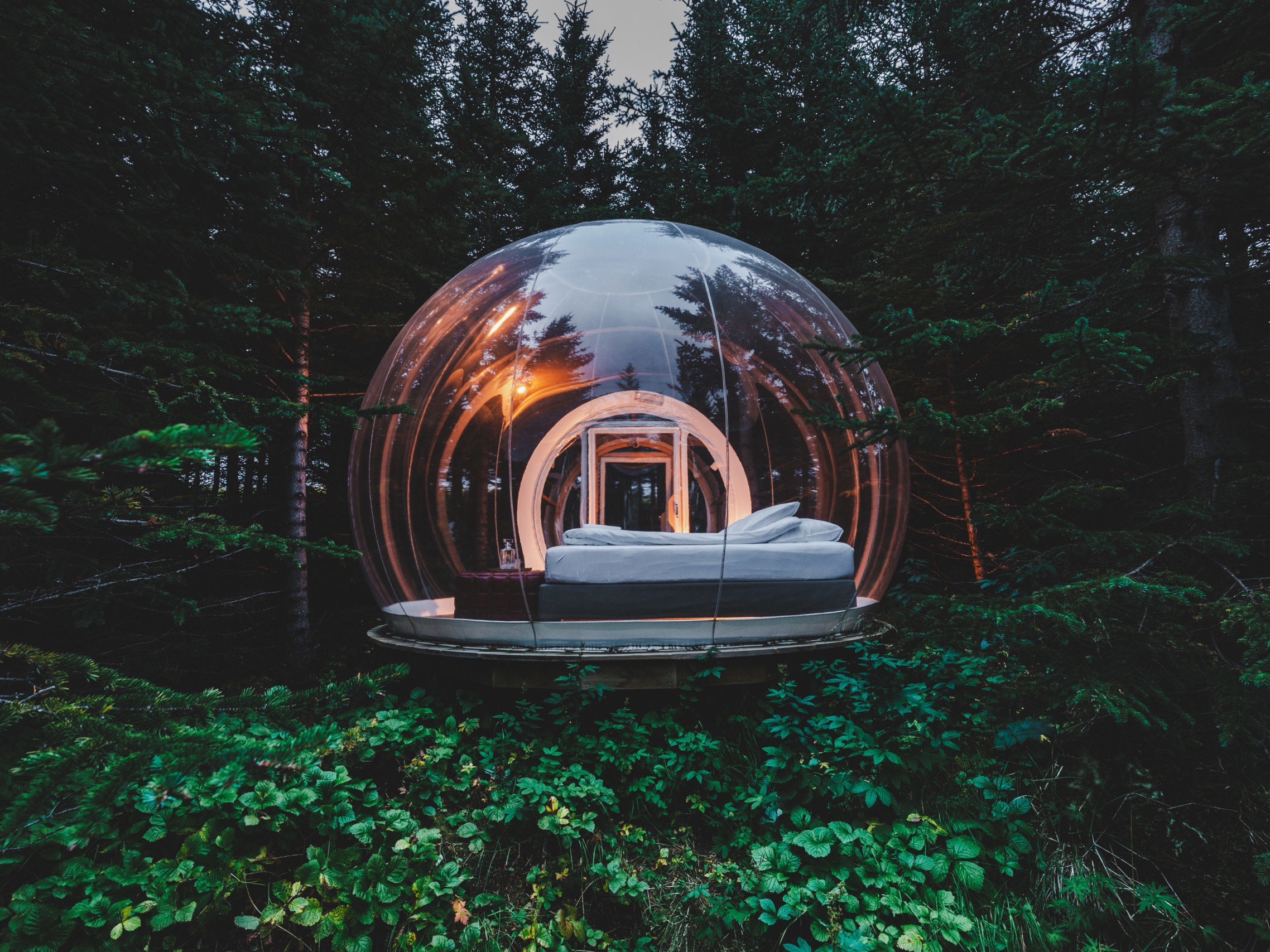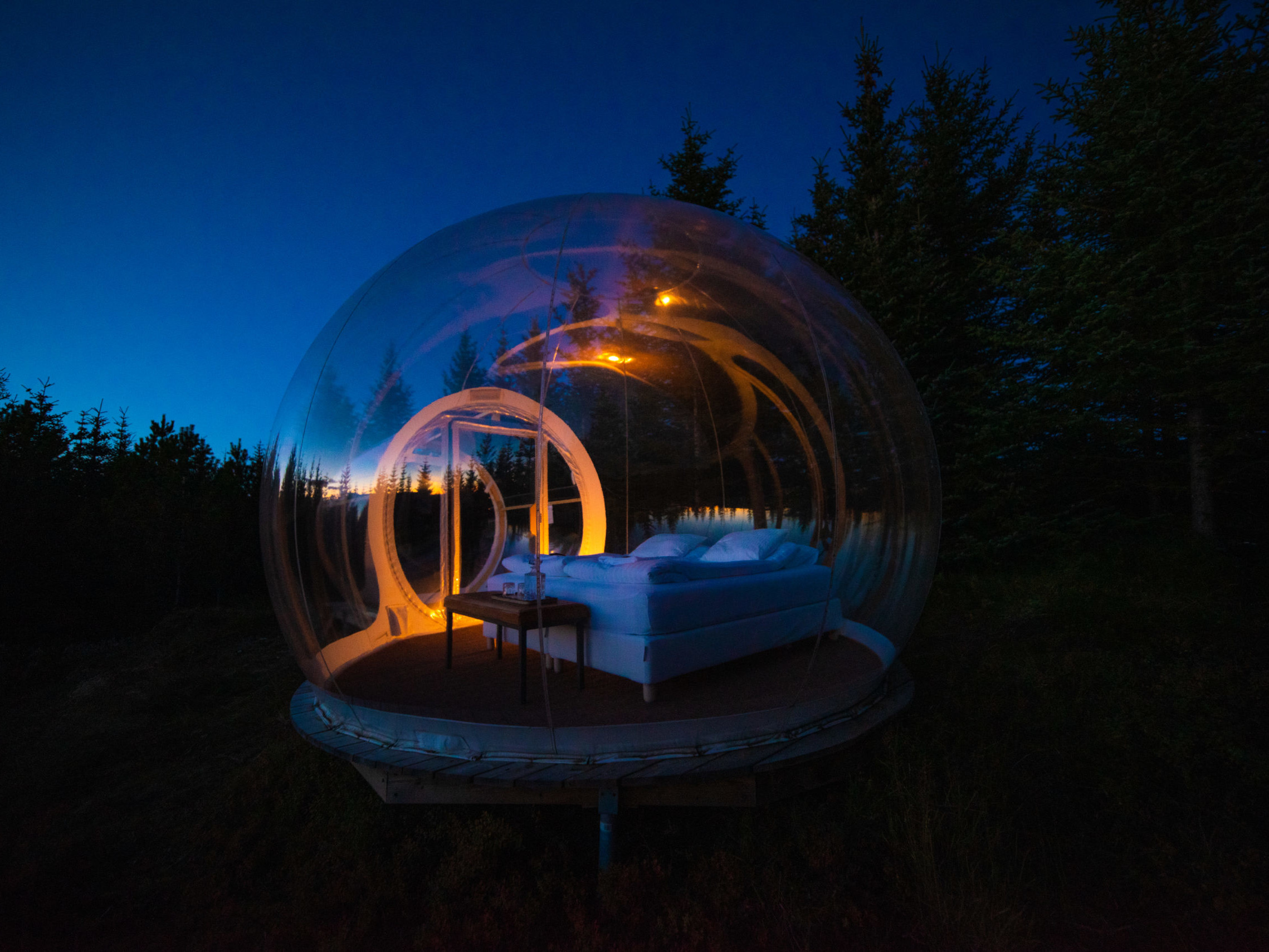Aurora Hunter Top 10: Where is the best place to see the Northern Lights on the South Coast?
When the sky is only clear in one region, that’s where you’re headed! But once you get there, then what?
So you’re headed down south, and you want to know: “Where is the best place to see the northern lights on the South Coast?” So we’ve put our heads together and gathered up a few of our favorite spots along Iceland’s southern coast for aurora hunting. From the rare to the luxe, we’ve got one in here for everyone.
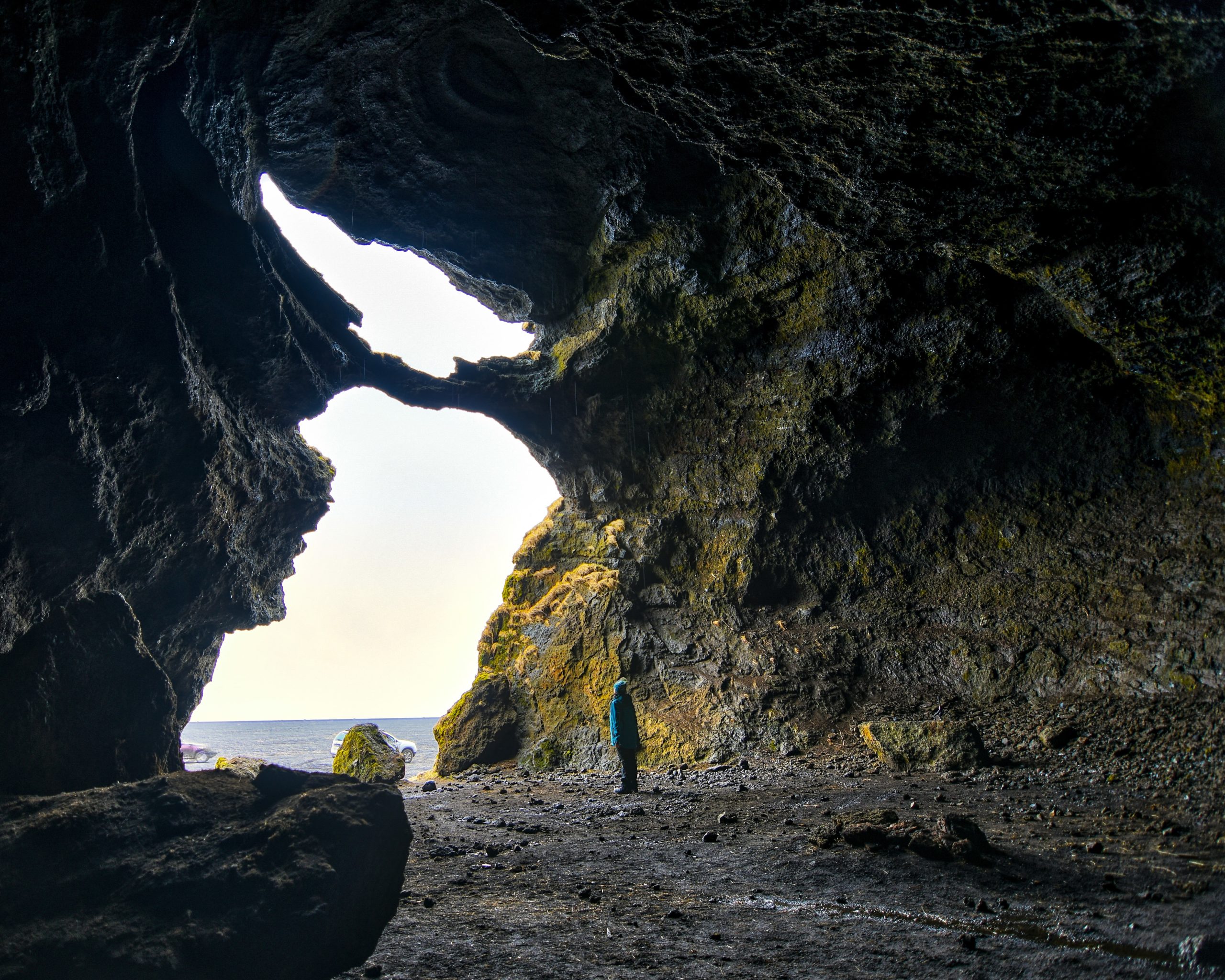
1. Gígjagjá at Hjörleifshöfði: The Yoda Cave
The south coast of Iceland is a dramatic landscape, no matter what season you visit. But if you’re looking for a spot a bit off of the beaten path to aurora watch from, look no further than the “Yoda Cave”.
The cave’s real name is Gígjagjá, but it is fondly known as “The Yoda Cave” since the entry to the shallow cave resembles a particular green individual. It is located in Hjörleifshöfði, which is an inselberg on the Mýrdalssandur plain near Vík.
Surrounded on all sides by vast black sand and seagrass flats, it is said that Hjörleifshöfði used to be an island, and the resting place of old Hjörleif himself. These days, you can drive up to it and enjoy multiple trails in its vicinity.
When inside the cave, you’ll find that the light from the outside illuminates the entry, creating a curiously familiar silhouette. Because of its shape, the cave entry is an amazing sight no matter when you visit. But imagine that shape filled with the majesty of dark sky, a million stars, and the dancing northern lights.. Not a bad spot.
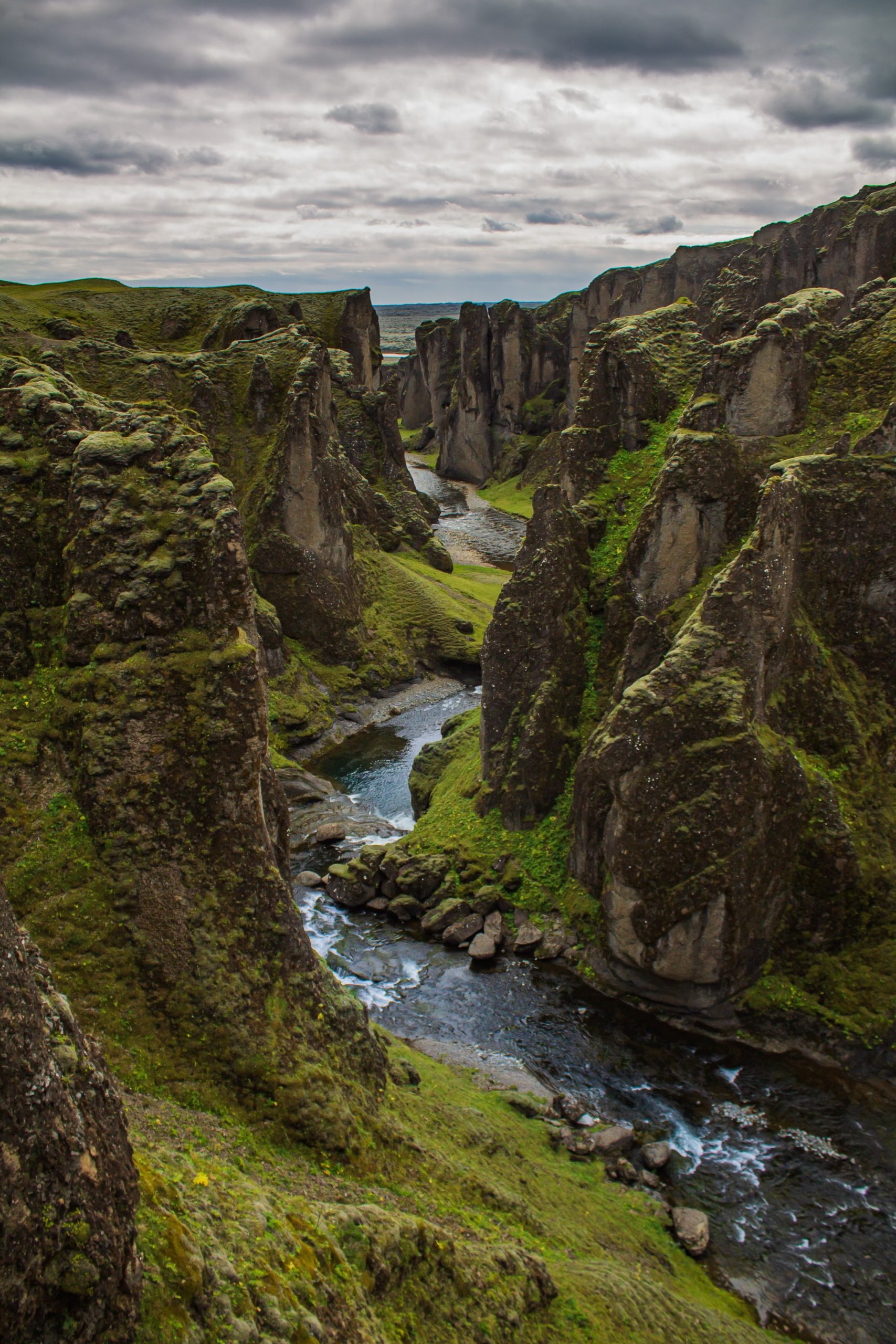
2. Fjaðrárgljúfur
At the more eastern edge of Iceland’s south coast, lies this ethereal canyon. Unlike many popular canyons, this one is not far from the main road. Right off of the village Kirkjubæjarklaustur, this canyon is nearly 2 km. long and houses the Fjaðrá river.
In good weather, the road to the canyon is accessible by all types of vehicles, and the hike along the canyon trail is easy and dry! This is key for those of us who are here to aurora hunt because unless you’re staying in Kirkjubæjarklaustur, you are probably not near a change of clothes.
The bottom of the canyon is home to an active river and a few waterfalls, not to mention protected vegetation and wildlife. Plus, the best view is on top. Fjaðrárgljúfur is a landscape photographer’s dream, so make sure you’re in the right place when the show starts!
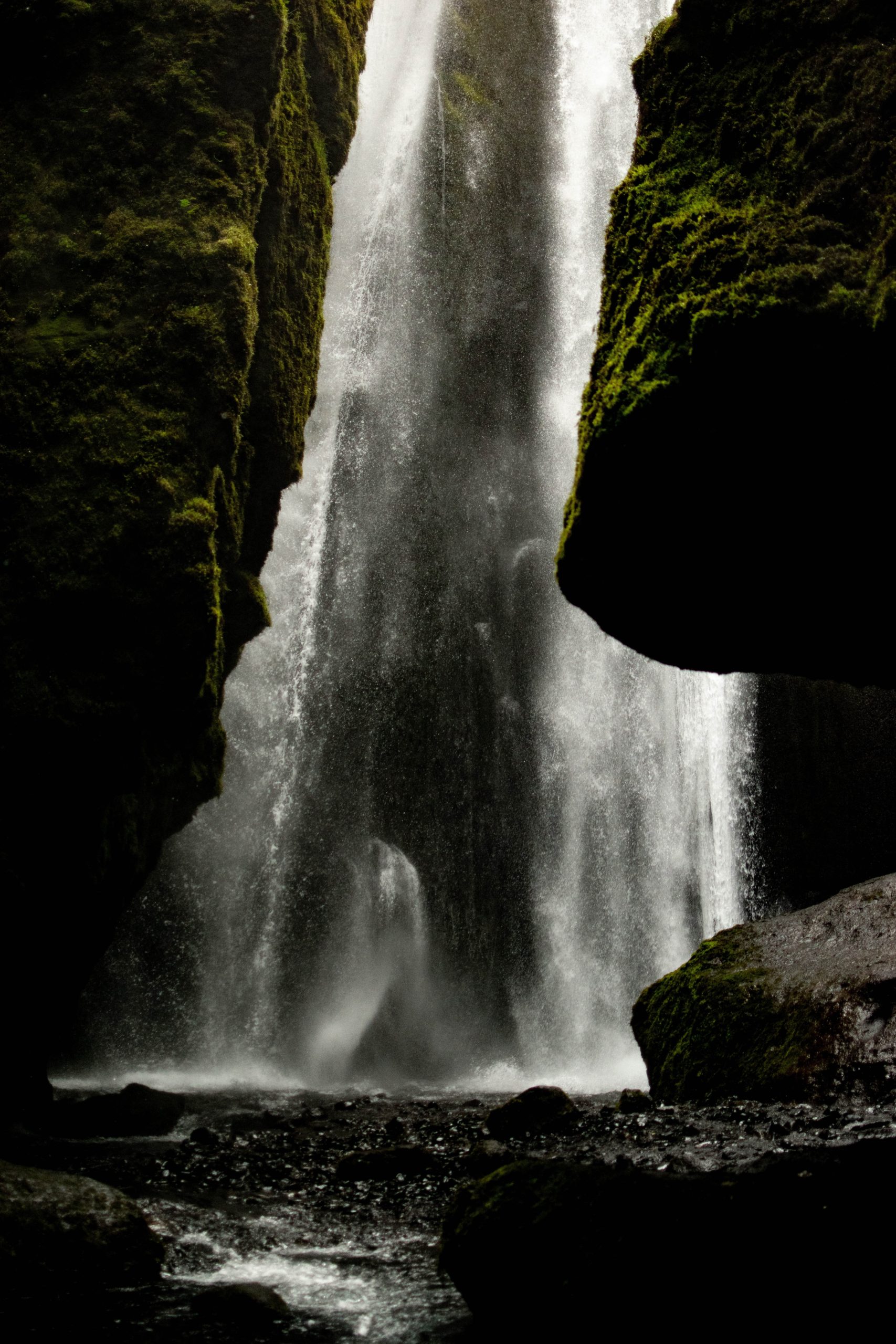
3. Gljúfrabúi & Seljalandsfoss
You probably already know Seljalandsfoss, but do you know its neighbor Gljúfrabúi? After walking behind the towering falls of Seljalandsfoss- an incredible spot in its own right – there’s a little known secret just a stone’s throw away.
Hidden in the same massive rock shelf that feeds Seljalandsfoss, this little waterfall is a hidden treasure of the south coast. When you approach, you see the stream of water first. Further down, you can see the falls peeking through the walls of the canyon. To access them up close, one must walk down the stream through the “halls” of rock.
Depending on the time of year and the conditions at the time of your visit, you may get wet! But once you make your way through the tiny canyon, you empty out into a natural room in the rock, where you can see the waterfall up close, and the sky up above.
Imagine seeing the aurora here, in Gljúfrabúi’s hidden chamber, with the mist of its spray all around. What’s the best place to see the Northern Lights on the South Coast? This is definitely one of them!
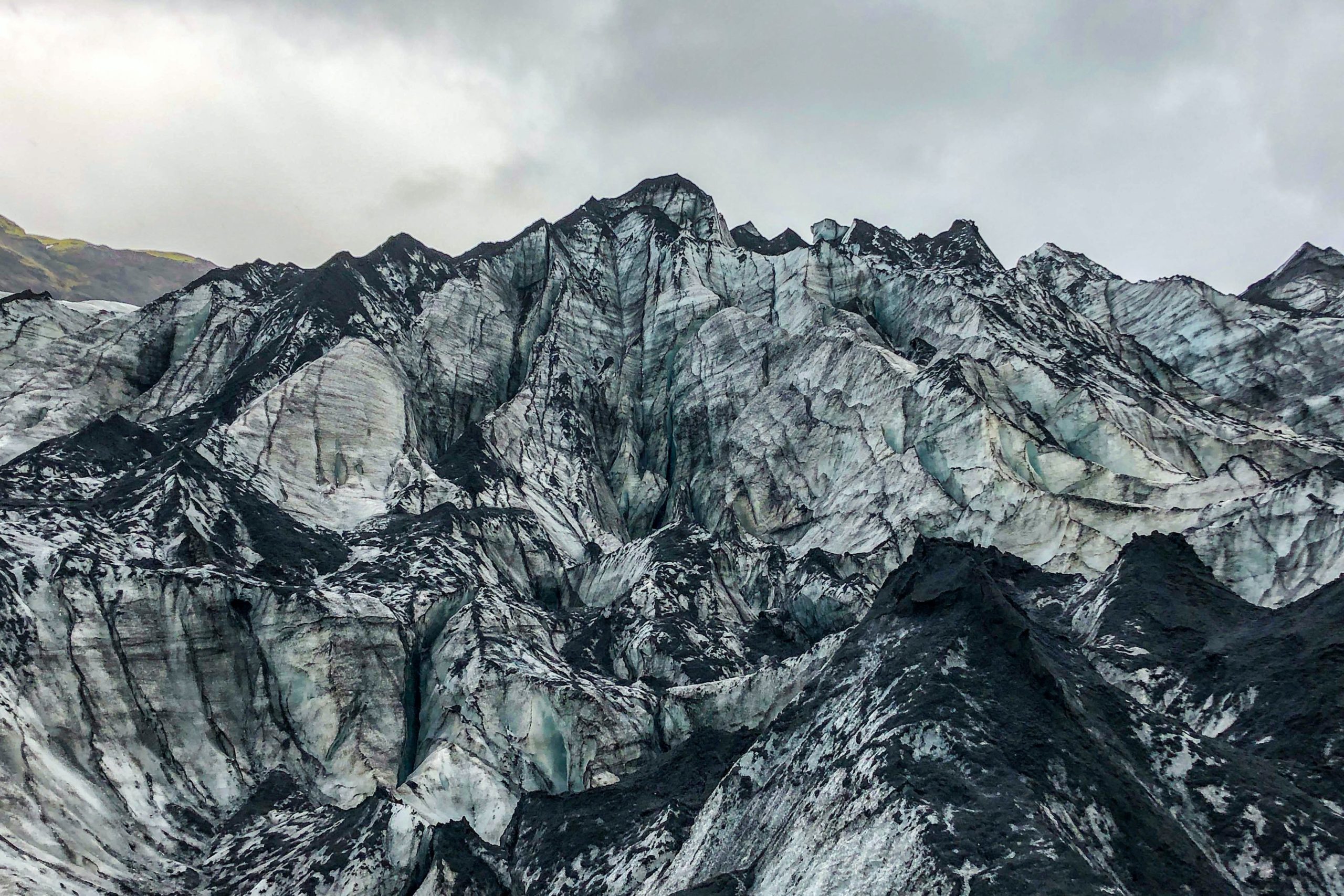
4. Sólheimajökull
Sólheimajökull is a piece of the larger Mýrdalsjökull, the south coast’s resident ice cap. (Mýrdalsjökull isn’t alone out here though, it shares the south with Vatnajökull, a glacier so big that it reaches through multiple regions!) This piece of the glacier is a popular location for glacier walking, ice caving, hiking, and just general wonderment.
This ice giant is incredible to see up close, and it is changing by the minute. One can visit the glacier on their own, but due to the extra training that it takes to traverse ice, it is only recommended to climb on with a guide.
Because of how quickly they are receding, one can’t make enough trips out to see the glaciers. They are visible reminders of how many gifts nature has bestowed upon us. …And seeing the lights in their presence is just one more gift on the neverending pile.
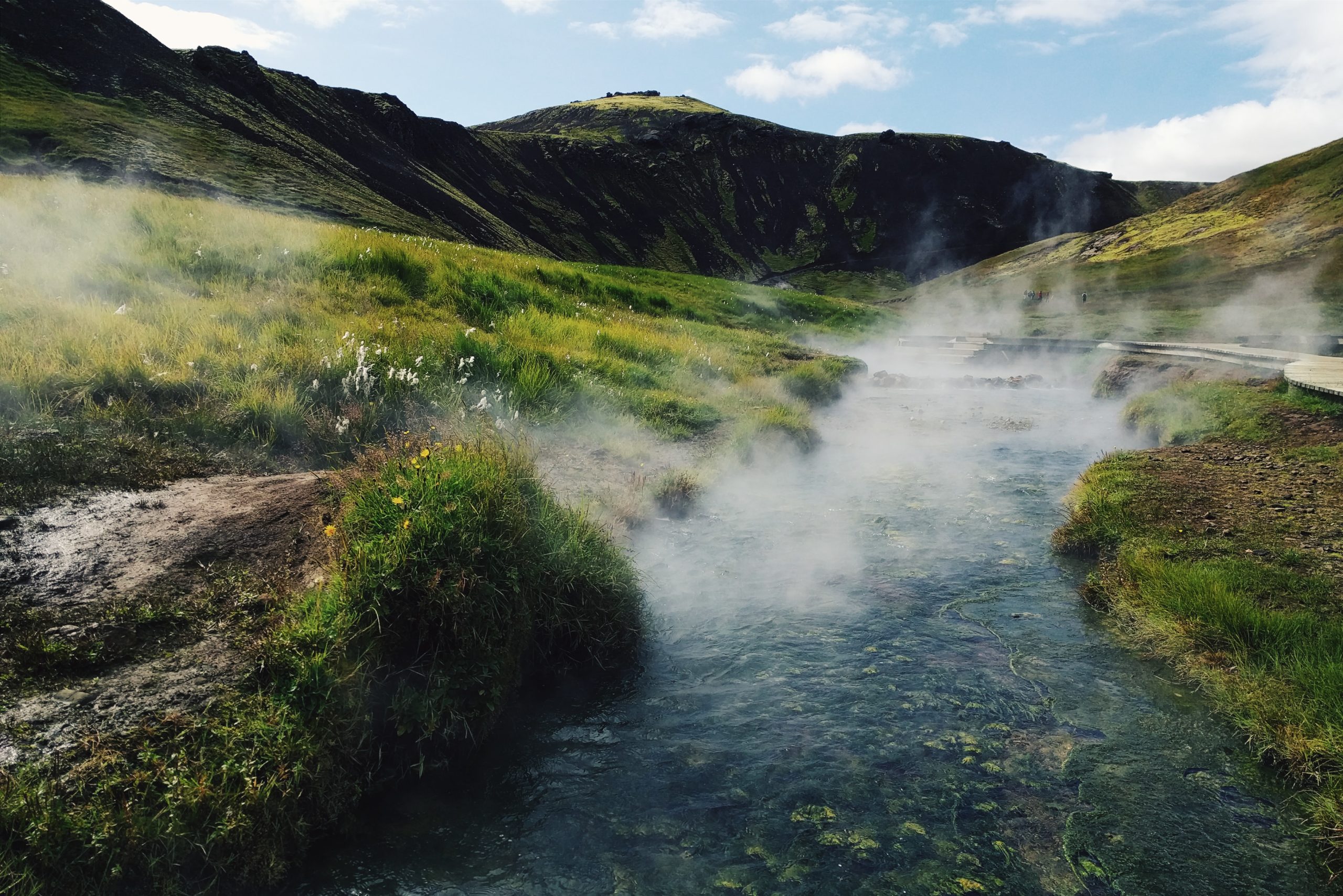
5. Reykjadalur
Reykjadalur is nearly 30 minutes from Reykjavik, so in some ways, it’s like the gateway to the south coast. Resting in the mountains above Hveragerði, Reykjadalur is a favorite of locals for its beauty, its accessibility, and its naturally hot water.
Reykjadalur means “Valley of Steam”, and it houses a geothermally heated river. This is a colorful area full of steam, bubbling mud, and incredible views as you ascend into these seemingly living mountains. It’s also mostly undeveloped!
There are maintained trails and even some protective boardwalk in the area around the water, but at this time there is no entrance fee, no buildings, and no facilities in this area. This could change over time, but for now, Reykjadalur is a place that belongs only to nature. The hike up takes around 45 minutes to an hour, and once you’re up there it is beyond heavenly to peel off your hiking gear and just lay in the warm river.
It is an incredibly restorative experience. Be careful, though! There are different temperatures throughout the water, so the further down the river you go, the hotter the water gets. This is mountain territory, so while the hike is not considered difficult, winter conditions can add some challenge to the terrain- even for the most seasoned hiker.
Things like early darkness, low clouds, and ice can make this an intense trek, so don’t forget your spikes and torches. But if you do make it up here, laying back in the hot water with your eye on the dancing sky- we’ll leave it to you to answer “Where is the best place to see the northern lights on the south coast?” I think we know what you’ll say.
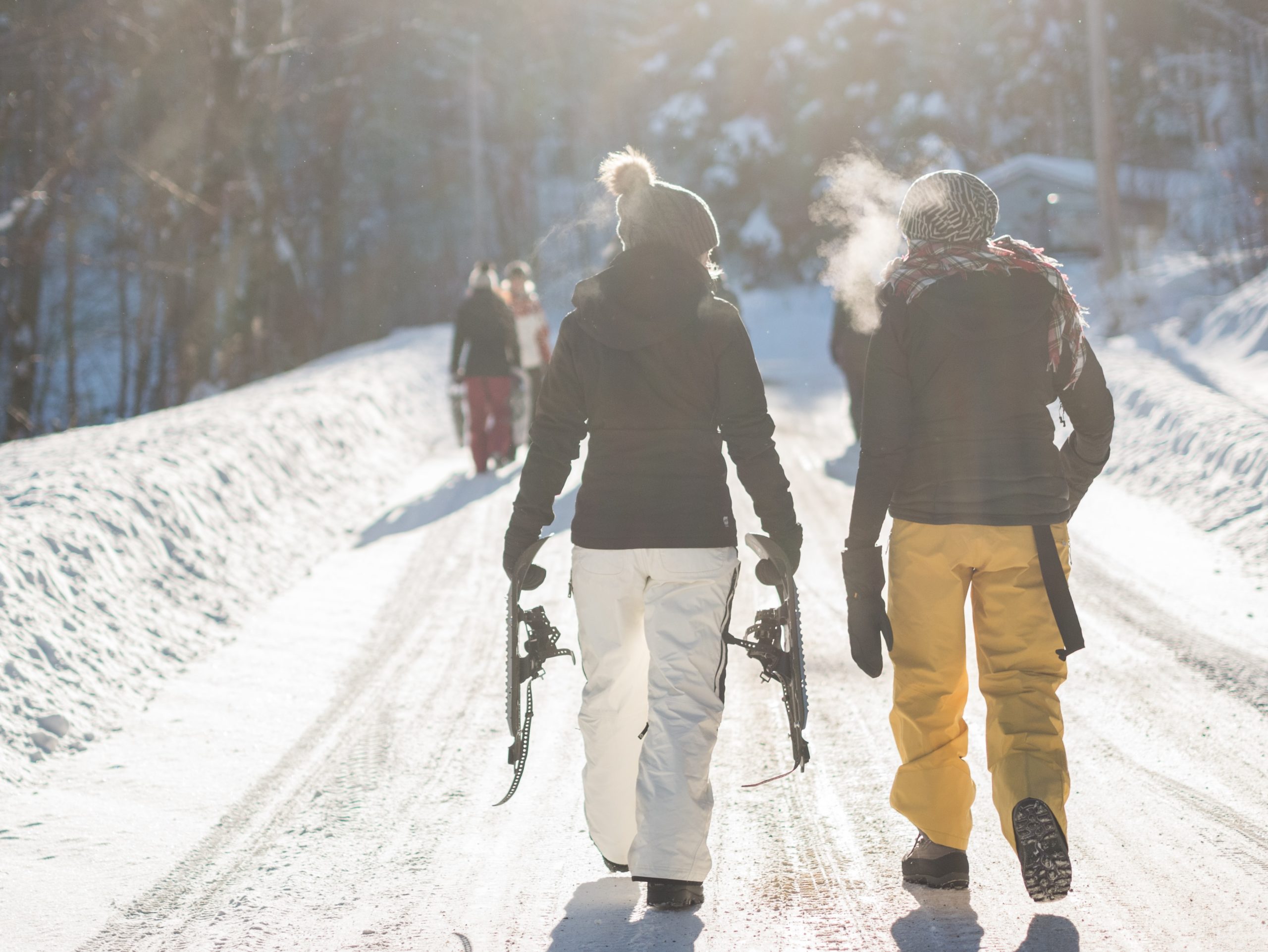
6. Bláfjöll
Even though we just crowned Reykjadalur as the gateway to the south coast- some could argue that that title truly belongs to Bláfjöll. Known as the “blue mountains”, Bláfjöll is a small mountain range that lies about 30 km from Reykjavik, just before Hveragerði.
Though popular for hiking, caving, and lava tubing pursuits- this area shares its name with the ski slopes that live amongst them. Driving through this area is one of your first tastes of wild country outside the capital, and it provides many quiet spots for aurora watching off the main road.
If you visit before the snow, you may get to experience a different type of lush covering- Bláfjöll’s endless fields of Icelandic moss. This moss covers the lava fields and huge swaths of the mountains themselves and can be seen for miles around.
Insulated by the snow in the height of winter, it returns to us every year despite its fragility. The moss takes ages to regrow after damage, so be careful not to walk upon it when hiking.
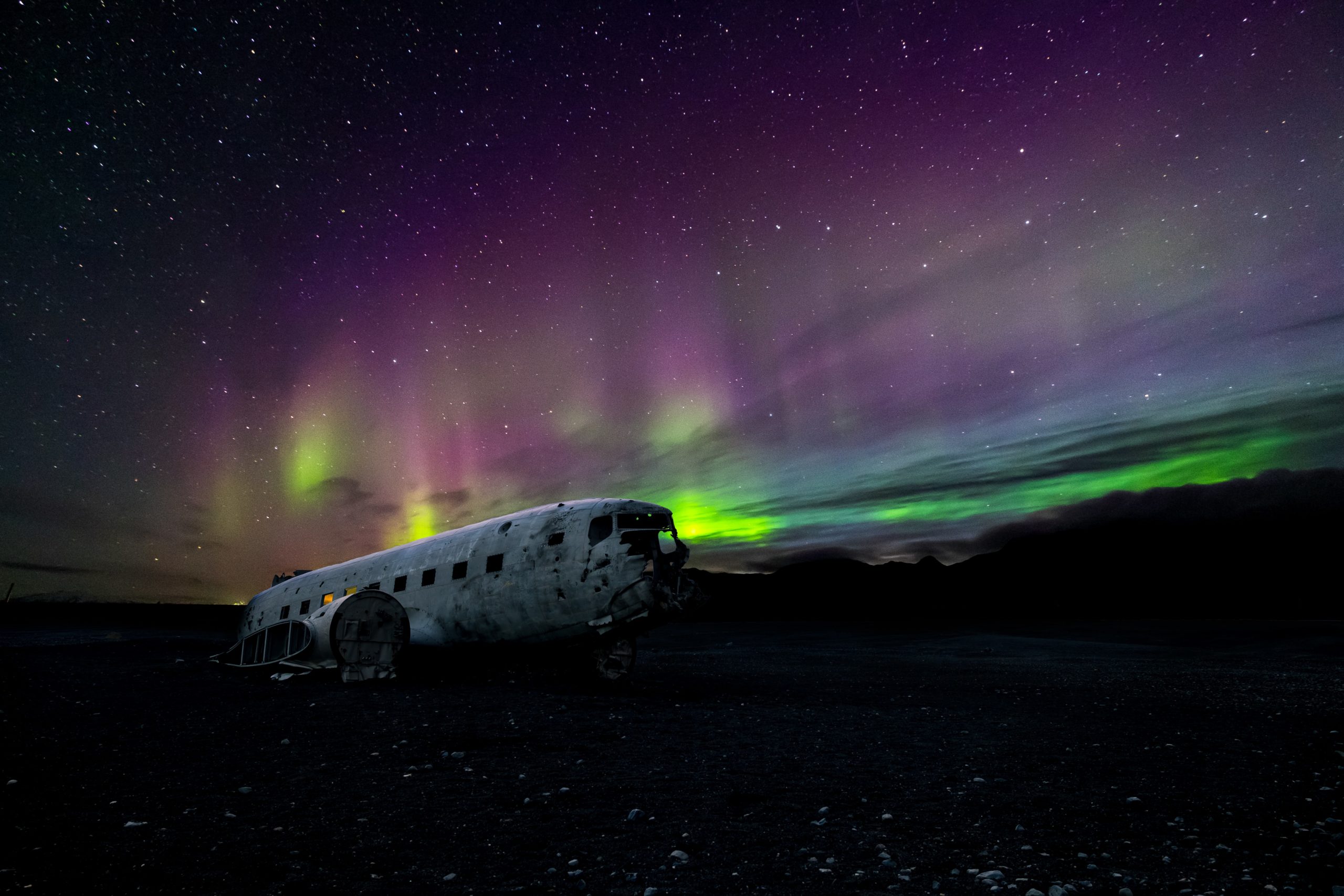
7. The plane wreck at Sólheimasandur
One of the more unusual stops, this is a pretty interesting one. Though it sounds grim, this plane wreck was non-fatal, and all of the passengers escaped unharmed. In 1973, a US Navy DC plane appeared to run out of fuel and had to crash land on Sólheimasandur– a vast black sand beach on the south coast.
The people inside made it out, but they left their airplane behind. The wreck of this plane is still resting on the beach today, a bit worn and smoothed by the endless Icelandic wind and the movement of the volcanic sand. It is a favorite location of photographers, and many have watched the lights from its empty belly.
If you choose to visit this spot, please exercise caution. While it is a flat land hike, it does take around an hour of treading sand to reach the wreck, and it cannot be seen from the road. You can leave your vehicle in the parking area, but you can no longer drive up to the location. This area is vast, and it is not populated by many landmarks- so it is easy to get disoriented here.
Be aware of the weather before you head out, as there have been accidents of exposure and hypothermia in the past. It is possible to visit the location with a guide, but be respectful of the area nonetheless. Just like the moss, we wish to preserve the unique strangeness of the wreck for years to come- so that many can spy the aurora from its wings.
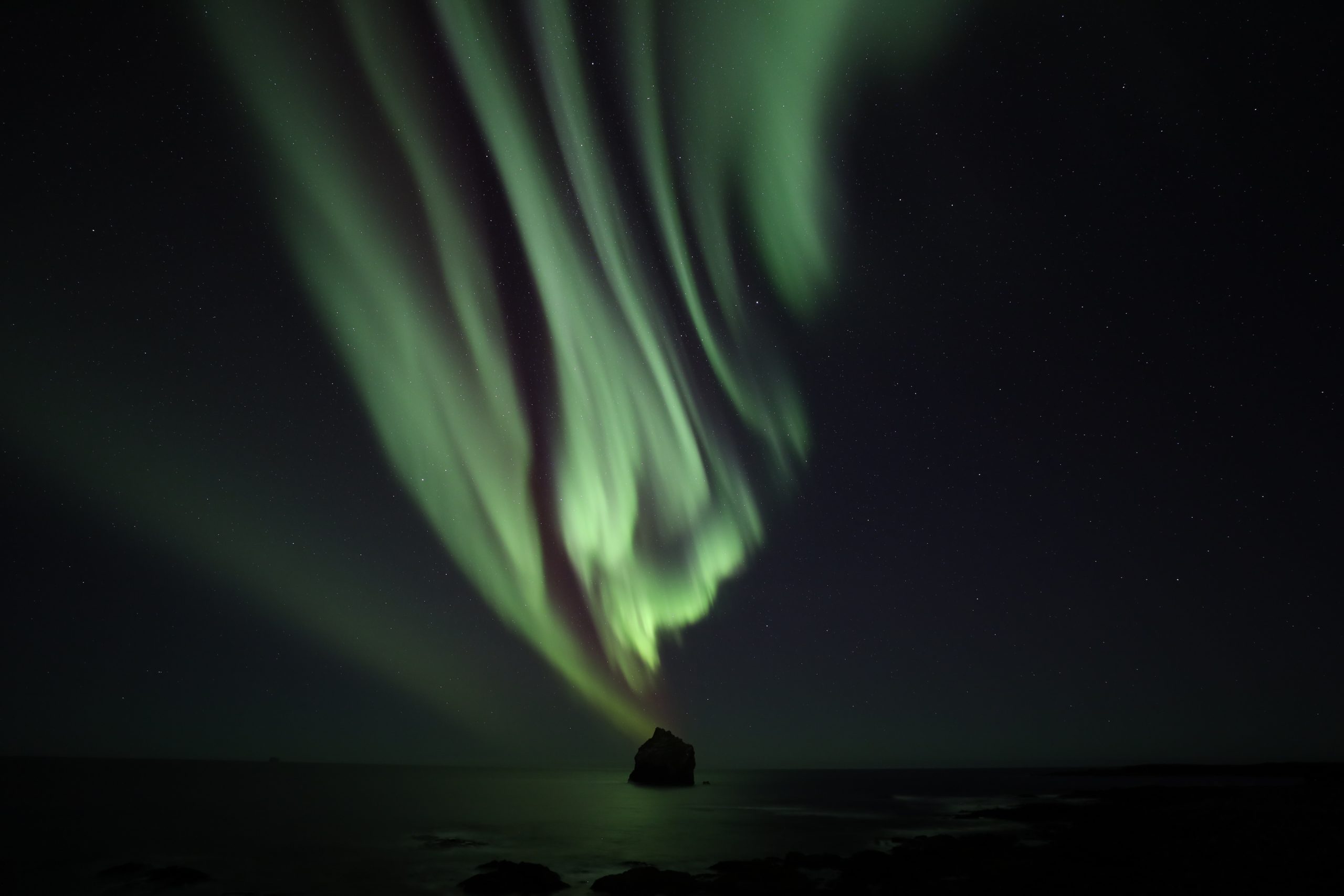
8. Þorlákshöfn (Thorlakshofn)
Wedged right in the corner of the coast where the Reykjanes peninsula meets with the full curve of the island, lies the little town of Þorlákshöfn. Known around the country as one of the primary places to catch a ferry to the Westman Isles– this is a charming seaside town.
Right along the edge of the coast, there are gorgeous villages to explore, and this is only one of them. This town rests at the end of the Ölfusá river and counts many curiosities among its hiking trails, bustling port, and beautiful sights.
If you’re planning a night out of aurora watching by the sea, this is certainly a good place to stop for a bite first. (Or to ride ATVs, horses, do some rock climbing, check out some sea caves, and more!)
This is a beautiful community where you can appreciate the brevity of Icelandic living, and the relationship between the sea and the warm volcanic land in which that life continues to thrive.
When we asked “Where is the best place to see the northern lights?”, it was not hard to imagine this place. (But don’t end your adventure here! If the weather is mild, hop the ferry to the Westman Isles! Southern Iceland really is a whole world of its own.)
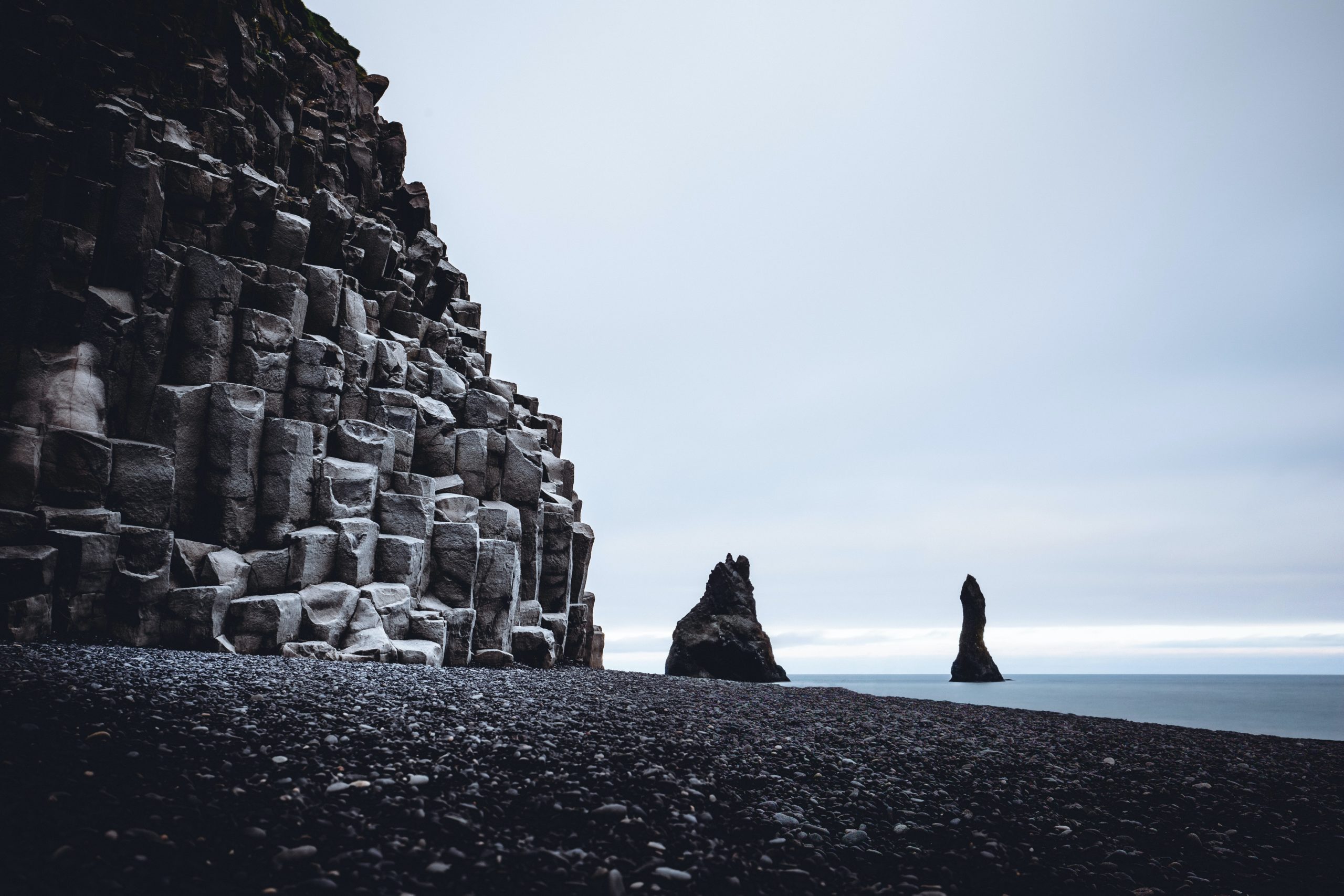
9. Reynisfjara
This is a popular spot, but it sure is hard to argue with. Reynisfjara is the name of the black sand beach near the village of Vík. Seen in countless films, tv productions, photographs, and artistic works- it’s a must see location.
Vík is the southernmost village on the island, and a great spot to branch out from if you plan on exploring the south coast region. Home to many activities, restaurants, and shops, this area is lined by dramatic basalt cliffs that thousands of seabirds call home in the summer season.
Though beautiful, the waves here can be massive and are known to be dangerous, so please exercise caution near the shoreline. Due to the small population of the town, you’ll find great dark skies here. We love Reynisfjara year round, but it truly is a magical place to watch the northern lights, in the shadow of slumbering Katla.
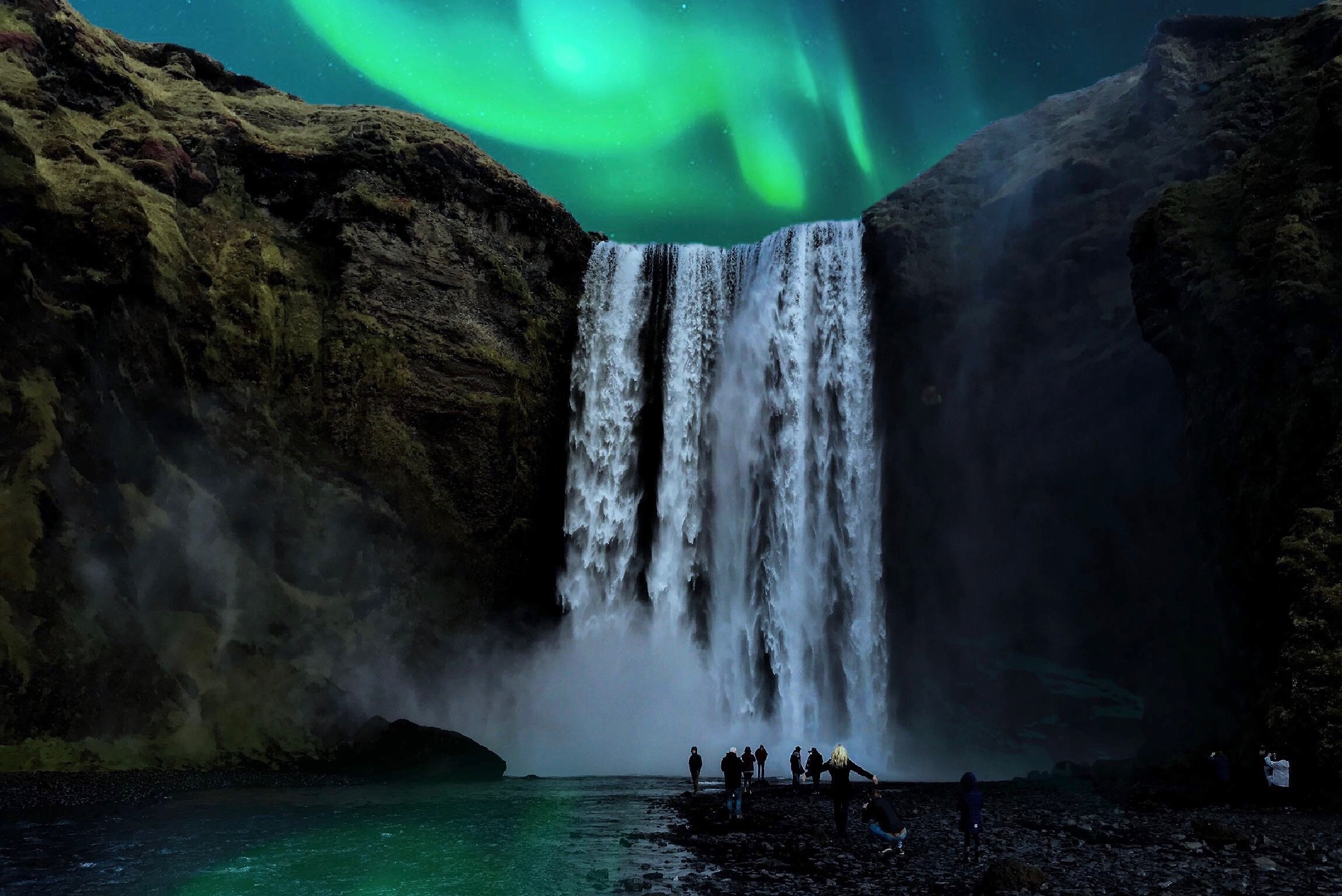
10. Skógafoss
Last but not least, we can’t leave this thundering giant off of a south coast adventure list. Not only is it close to some of our favorite northern lights hotels, but it makes an incredible aurora vantage point.
If you visit earlier in the day, you can climb to the top of the falls and enjoy the 25+ waterfall trek known as waterfall way! (You thought the show was just Skógafoss? Guess again!)
Skógafoss is the grand finale of the Fimmvörðuháls path, a 22 km. trek into the hiker’s paradise, Thórsmörk. While this adventure might not be possible in high winter, you can catch the tail end of its availability in autumn. For those that don’t wish to make the full 22 km., waterfall way is only about 8 km. one way, following the river.
But this is extra. Skógafoss itself is phenomenal. Standing at 60 m. high and 25 m. across, you can see this wonder right from the main road. It creates huge clouds of mist, and it empties out on a vast plane of land that runs out to the sea.
You could spend a whole day here exploring the surrounding area and enjoying the falls from different vantage points. You can even throw up a tent and camp out nearby, lulling yourself to sleep to the constant hum of falling water. Don’t forget to look up though! The rainbows in the mist during the day are hard to compare to the aurora curving over the cliff edge at night.
Next level Aurora Hunting: 5 wild places to watch the Northern Lights in Iceland
Looking to up the ante on your aurora hunt with a getaway to a rare location? Look no further.
Seeing the northern lights is phenomenal no matter where you are. But for some next level aurora hunting, we’ve reached deep into our own favorites for some rare spots that we think you’ll enjoy. Seeing these places at all is a big win, but aurora hunting in them? Unforgettable.
1. Grímsey: The Gateway to the Arctic
Grímsey is the one point in Iceland that actually reaches the Arctic Circle. Resting about 40 km. north of mainland Iceland, Grímsey straddles the actual Arctic Circle and is the northernmost inhabited land in Iceland. (There is a smaller island further north, but it is uninhabited and is predicted to soon be claimed by the sea.)
Getting to Grímsey is fairly straightforward. You can hop on the ferry for a 3 hour trip both ways, or catch a quick 25 minute flight from Akureyri Airport. Believe it or not, you can access this northern gem year round.
Home to only about 100 people, Grímsey is a popular destination for aurora hunting, birdwatching, history buffs and those that seek the rare and covetous Arctic Circle certificate! When in Grímsey, one can actually visit the border that denotes the current location of the Arctic Circle boundary.
This intersection is marked by a nearly 9 ton stone sphere called “Orbis et Globus.” This giant art piece is a monument that was made to mark the Arctic Circle boundary, and follow its movement. In fact, it’s round because they never intended this monument to be static- just as the Arctic Circle is not static.
At the time of this writing, the Arctic Circle is marked at 66.5 degrees northern latitude, but it is constantly moving further north of us. The circle is moving about 14-15 meters north every year, and will likely continue this journey for 10-20,000 more years.
At that time, it is expected that it will move south once again. Till then, we have the century stones on Grímsey to mark its passage. You can visit these three stones, that mark the past locations of the Arctic Circle border from the summer solstice in 1717, 1817, and, 1917.
Depending on how things go, Orbis et Globus may have to roll into the sea! Despite Grímsey’s diminutive size and small population, it is a place of thriving life and a phenomenal aurora hunting spot.
There are multiple options for lodging there, multiple historic locations to view, and many hiking paths where you will truly be alone with nature at the edge of the world. Out here it’s just you, the northern lights, and about 1 million estimated sea birds.
This close to the pole your ability to pick up low level solar activity increases, and of course you can’t complain about the quality of darkness out in the Arctic waters. Not to mention, the certificate!
There are multiple ways to acquire one of these rare documents, and for many, they are a trip highlight. You can secure yours by taking a Nordlandair/Air Iceland flight, or by purchasing one in the Gallerí Sól giftshop.
(According to the town of Akureyri’s webpage, Gallerí Sól is open Monday, Wednesday, and Friday during the summer months, which may not line up with many Aurora hunters. If you plan on taking the ferry, make sure to write or call ahead to pre-reserve your diploma by phone (+354) 4673190 / (+354) 4673156 or by email: gullsol@visir.is. Can’t leave without it!)
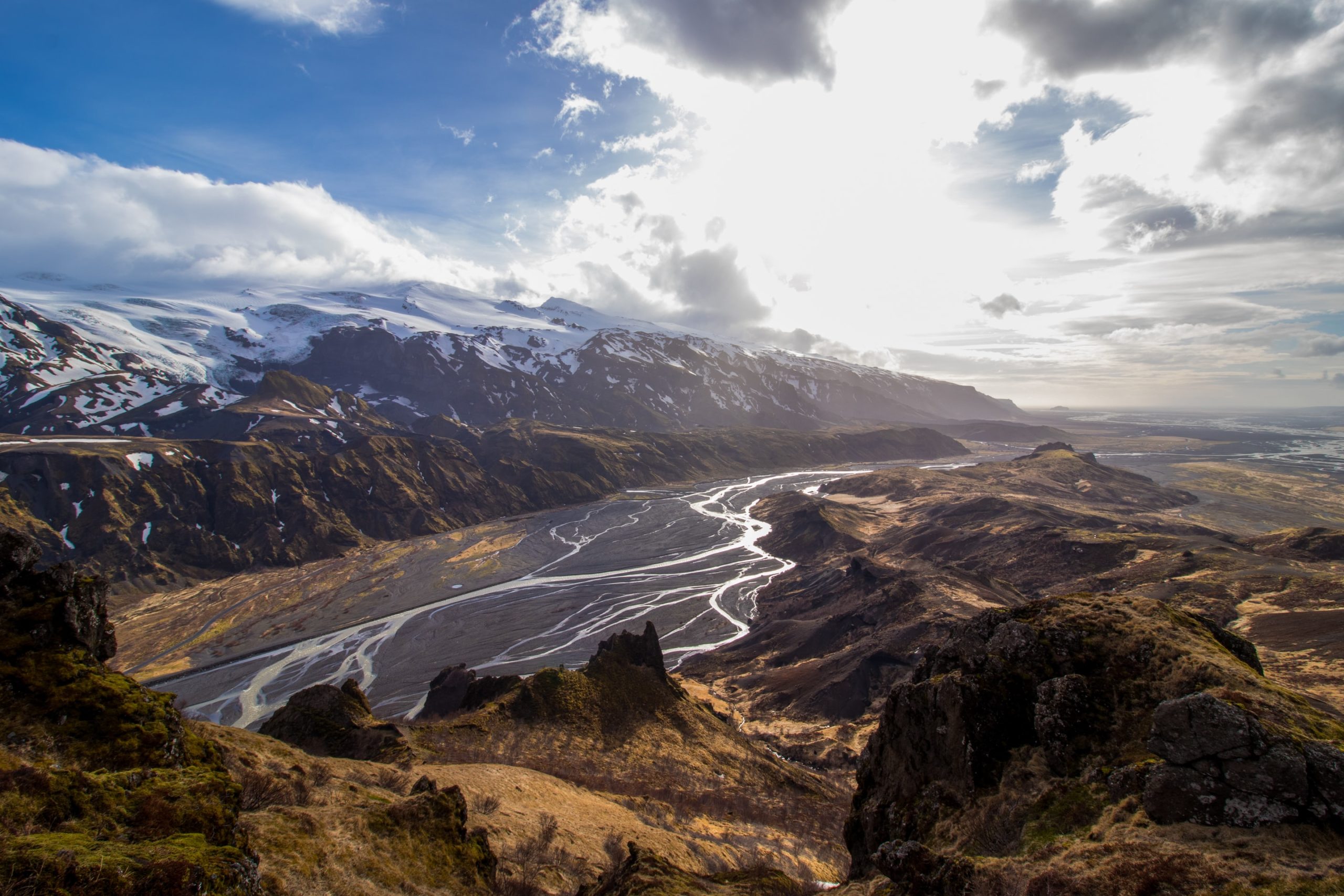
2. Þórsmörk/Thórsmörk: Valley of the God
In English, this place is The God’s Valley. Named for Thor, you don’t have to be here very long to see why this place is divine enough to be a deity’s backyard. Thórsmörk makes the list not only because it’s painfully gorgeous, but it is also not so easy to get to.
Nestled in the southern Icelandic highlands, this nature reserve is officially a trek. Though it doesn’t take too long to get there from the main ring road, it does require some F-road travel and depending on conditions, a couple of river crossings.
These are glacial rivers, and because of that, it can be hard to predict how deep, how turbulent, or how difficult a crossing will actually be at the time. Glacial rivers are affected by climate change, seismic and geothermal activity, and just weather in general, so this is a location that we recommend some help to access.
While it is perfectly legal to attempt this journey yourself, most rental insurance does not actually include water damage to the undercarriage of a vehicle, which is good to know before you take a 4×4 into the middle of a river for the first time.
Even the experts get stuck sometimes in their specially modified highland crawler trucks- so it’s a good thing to take seriously. Fortunately, there’s another way!
Thórsmörk is home to some cool mountaineer lodging and endless beautiful hiking trails, there are many different guides that can help ferry you into the god’s oasis.
These experiences range from private super jeep expeditions, all the way down to the Highland Bus, which is a specially altered bus meant to navigate river crossing and get you over Eyjafjallajökull’s still standing piles of fine ash.
If you’re able to make this journey in the winter, be ready with your cameras. There are some unbelievable vistas in this area, and some of them are quite manageable for the novice hiker.
Proceed with caution though, because colder months of the year bring additional navigation and footing challenges that should not be overlooked. These are the true highlands, and people aren’t kidding when they say it’s another planet.
Between the climate microcosms and the rapidly changing conditions, it is good to be extra mindful out here. Keep in mind that some of these pathways into the reserve may not receive extensive service in the height of winter, and so if you are aurora hunting then, it is recommended to go with a guide.
If you are visiting in the earlier or later halves of the aurora season, it may still be clement enough to venture out on your own, if you are an experienced outdoors person, or you’re hitching a ride on the Highland Bus.
Thórsmörk in the autumn months is colorful and covered in berries, and a great place to spend the night for a northern lights show like you would not believe. When you’re there, you know you are watching from Thor’s own theatre.
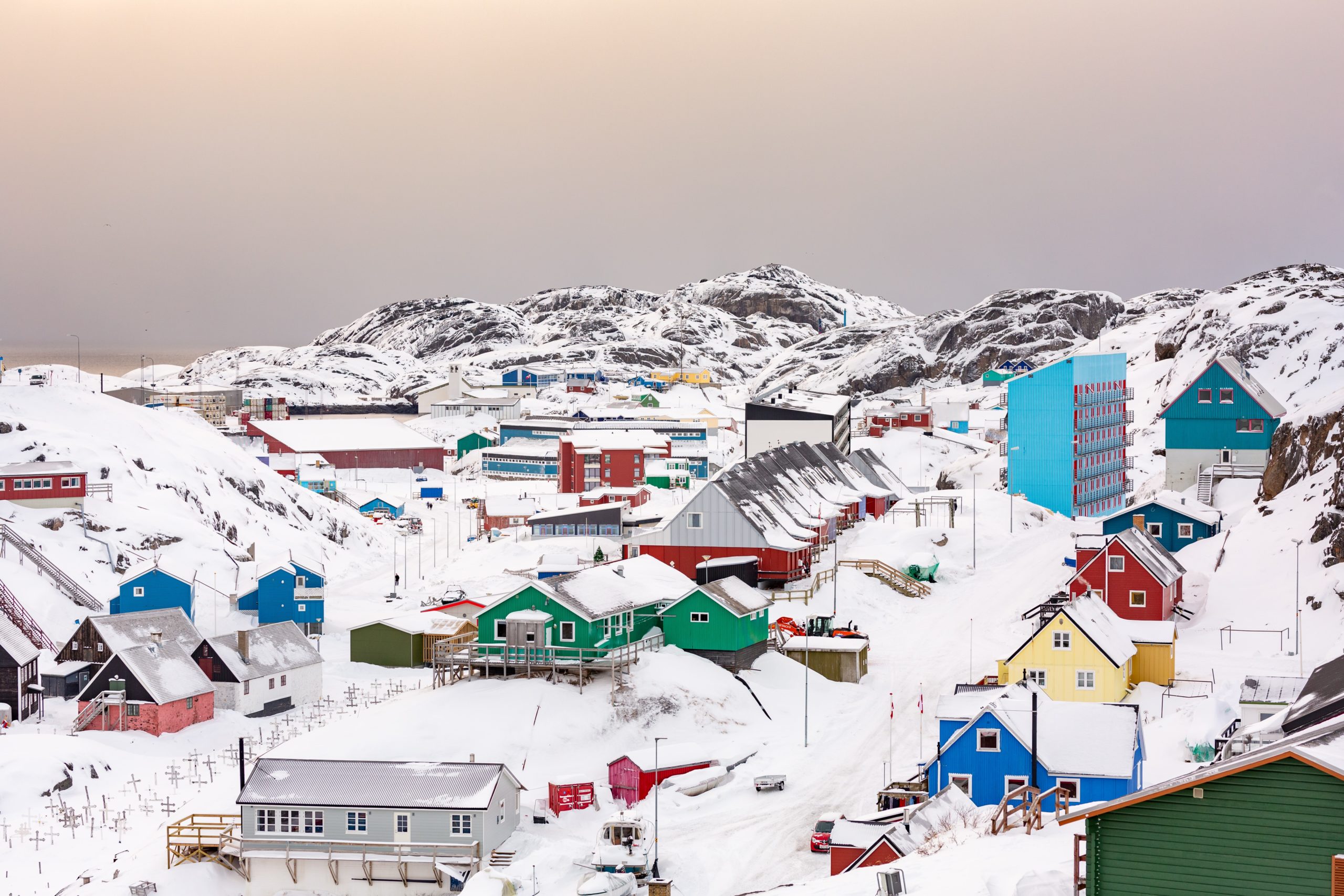
3. Greenland via Reykjavik or Akureyri
I know what you’re thinking! Greenland? But this isn’t a rare spot in Iceland? And you are correct. However, for the intrepid aurora hunter or day-tripper, it is good to know that the icy shores of Greenland, or Kalaallit Nunaat, are accessible from multiple city airports in Iceland.
You can catch a quick flight in Reykjavik’s domestic airport to the capital city of Nuuk, and it only takes about 3 hours and 20 minutes. These flights visit multiple locations in Greenland however, so if you’re looking for a longer stay you can visit Ittoqqortoormiit, Kulusuk, Narsarsuaq or Ilulissat.
Though this is another country, we had to include it on the list as a rare and magical aurora hunting dream spot- because it has not been possible in recent years to get many direct flights to this area outside of Iceland or Denmark.
Thanks to Greenland’s small population, remote towns, and low light pollution, this is a phenomenal place to chase the lights. This large landmass also boasts fairly clear skies most of the time and is large enough that you can move around to avoid some of the relentless low-pressure systems that are so populous in the high winter of the year.
There are many things to do while you wait, like fishing in the pristine ice fjords, dog sledding, hiking, climbing, and visiting one of the biggest ice caps in the area. But don’t stray too far from the towns- with their colorful houses and local delicacies, they are just as incredible and bright as the light show you’ve come to witness.
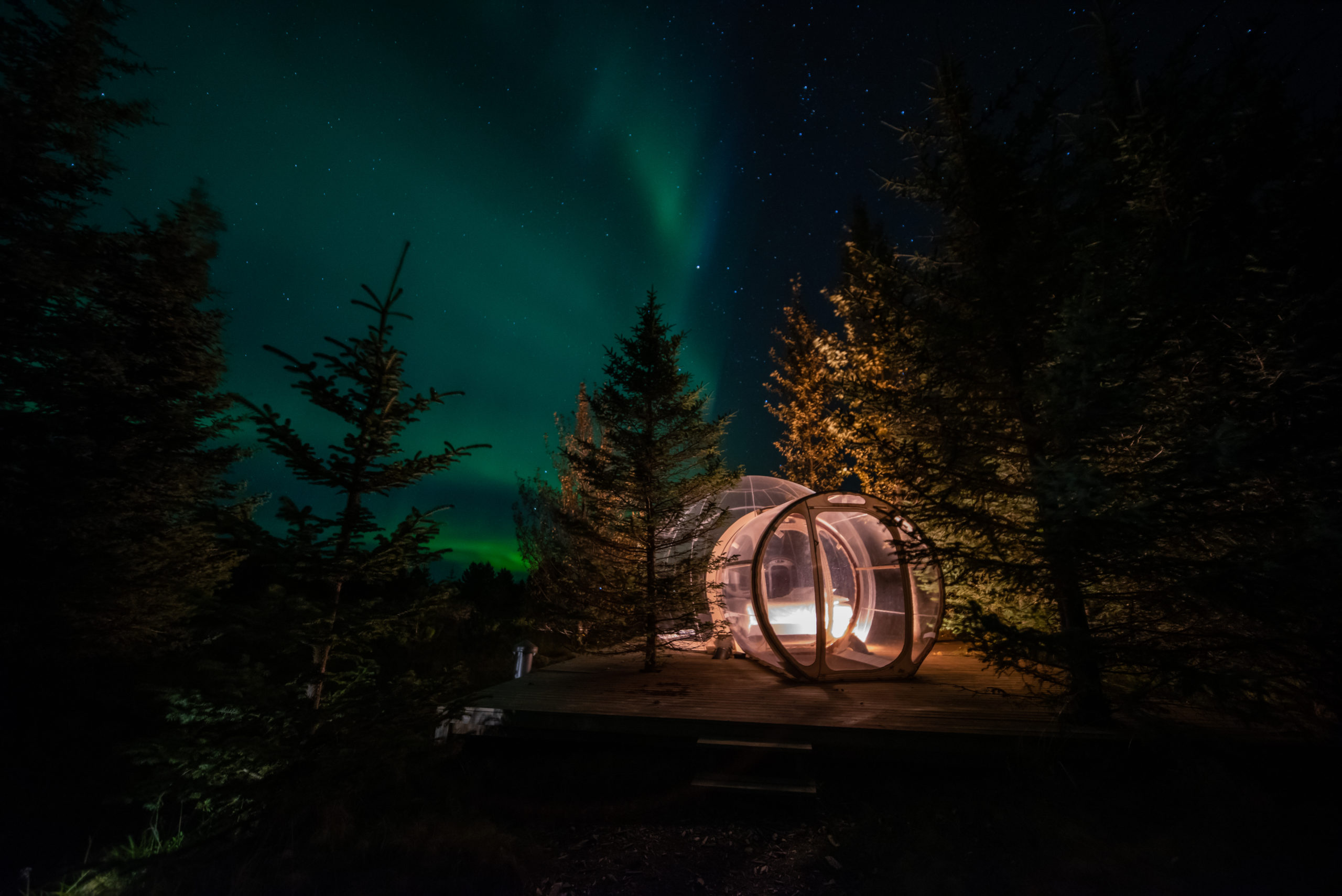
4. The Bubble Hotel of Iceland: Imagine if the only thing between you and the lights was a bubble?
Though rare, this spot might be easier for you to get to- with some help from their intrepid guides. The Bubble Hotel of Iceland is a surreal paradise tucked away into two different Icelandic forests.
These wholly transparent spheres are heated and nested into private groves so that you can melt into nature while wrapped in a luxurious down comforter. This might be our coziest location yet!
Typically when aurora hunting, you have to give it a rest when you go inside. Sometimes we miss prime aurora hours, or even a whole show when we head in to get a hot chocolate and thaw out.
But not here at the Bubbles. At the Bubbles, going inside never means missing the sky. You can lay outside for the whole night, and see everything around you from your 360-degree nest in the woods. It’s hard to beat!
If you plan on visiting the Bubbles, it is good to note that there are not many of them, and they book up months in advance. They exist in order to protect the woodlands they’re in, and provide an alternative revenue source to the farmers in the area so that they do not have to sell their lumber.
Protecting long-term growth in new forests is an important task, and so not only are the Bubbles a fun choice, they are a responsible one. They are located out in the country near the Golden Circle region, and the South Coast region, and upon booking, one of their local guides will collect you in Reykjavik and give you a chauffeured tour on the way to your destination.
They will also pick you back up the next day, and return you to town. From start to finish, a trip to the Bubbles is the ultimate luxury and a rare chance to turn off your brain and connect to the world around you. Not a bad state of mind for some aurora hunting.
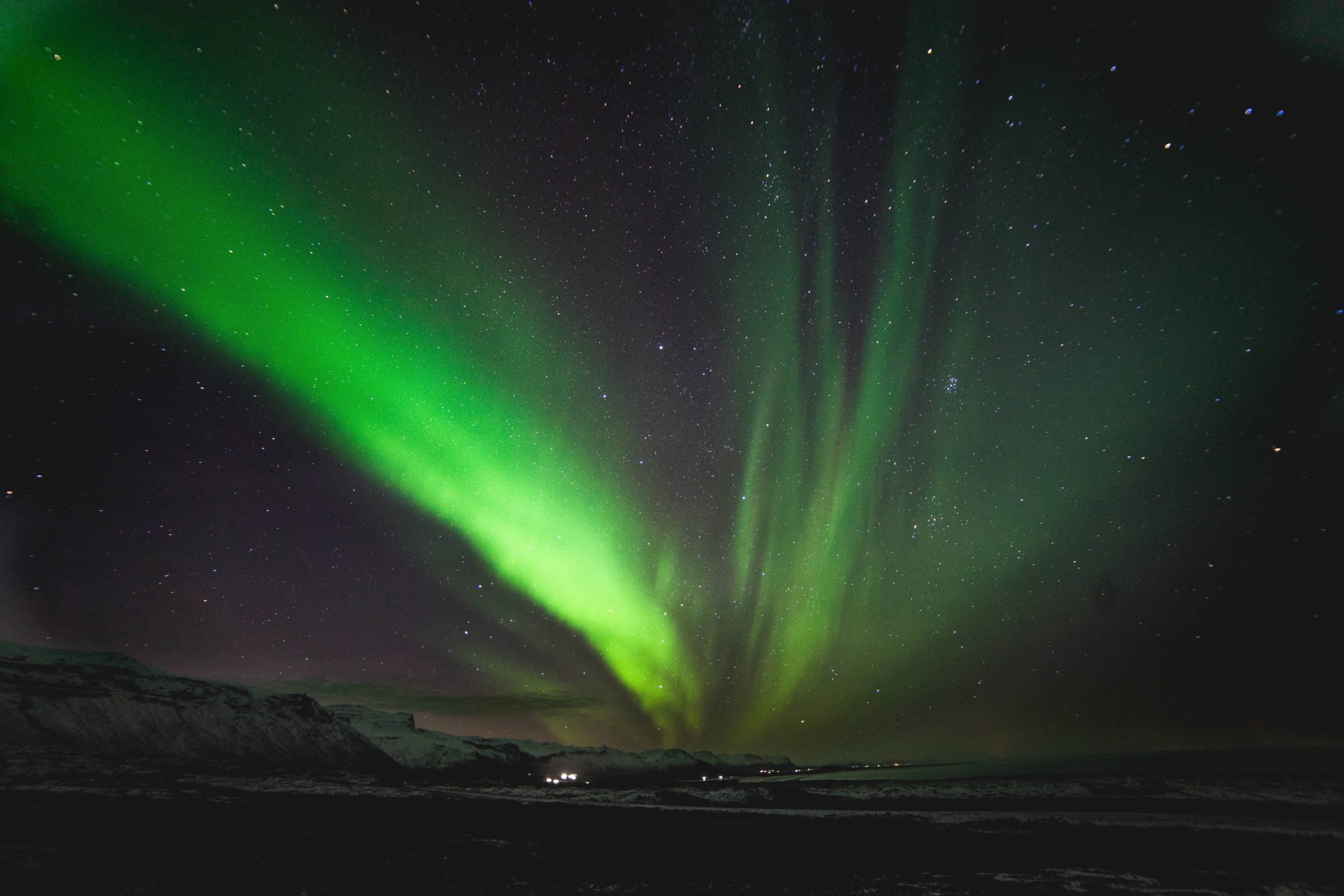
5. The Arctic Henge at the top of the world
Unless you’re already stationed up in the north, it may take you quite a while to get to this one. Sitting at 2 hours and 2 minutes drive from Húsavík, this monument is nearly the highest mainland point in Iceland.
Designed by Artist Haukur Halldórsson, the Arctic Henge is much like Stonehenge and is built as a reminder of figures from Norse mythology. The henge itself represents four dwarfs from the Prose Edda book who were tasked by Odin to hold up the sky.
It acts as a sundial and a calendar of sorts, reminding us of all of the dwarves that help to build this chronological map of the seasons. Right now the henge consists of four six meter tall gates and one ten meter high column, but it is still under construction.
The stones used to create it are massive, Set on a hill in the seaside town of Raufarhöfn, this is a historical place with an incredible spectrum of wildlife. If you don’t visit Grimsey, this is nearly as far north as you can get in Iceland.
The clarity in the northern climes and lack of light pollution is sublime, and few photos can rival a choice shot of the lights dancing among the henge. (Perhaps even a video punctuated with the wild cries of Arctic foxes darting in between? This is their turf, after all.)
Keep in mind when you visit that the henge is a holy place celebrating the Ásatrú belief. It may yet be under construction for some time, and so it may take a few visits to see everything that has been planned.
Though it is out of the way, don’t sleep on Raufarhöfn and its beautiful henge. Aurora hunting is a place of deep magic is not an opportunity to be missed.
Best Place to See Northern Lights
Best Places to View Northern Lights
Below you will find information on some great places in Iceland for viewing the northern lights. These are not only great places to see the lights but also feature many activities and natural sights. When planning a trip to Iceland it’s important to research what kind of things you would like to do and the places to see. The northern lights can only be seen in the winter, when it’s completely dark with clear skies. There are many nights where visibility is low so make sure you have other items on your bucket list and take in as much of the country as you can. The northern lights are a natural phenomenon, so a bonus to your trip.
Hotel Rangá – the best place to see Northern Lights
Hotel Rangá is one of the most renowned hotels in Iceland for seeing the northern lights. It was the first hotel in the country to offer a northern lights wakeup call service to its guests so they could pull their parkas over their pyjamas if the Aurora made an appearance. In addition to their comfortable and luxurious rooms, the location on the south coast is in close proximity to natural wonders like Seljalandsfoss and Skógafoss waterfalls, the Reynisfjara black sand beach and basalt columns, and the infamous Eyjafjallajökull volcano. Hotel Rangá makes for a great place to see the beautiful dancing northern lights.
Hotel Glymur with its amazing village suites
Hotel Glymur is a friendly hotel with a beautiful village suites. It’s located in majestic Hvalfjörður (“Whale Fjord”) just north-west of Reykjavík, and has breathtaking scenery. It has a lovely relaxed atmosphere and a great restaurant that offers everything a hungry stomach needs. The six village suites are uniquely designed villas, each with an open-concept kitchen, bedroom, bathroom, leather sofas, large screen TV, dining table, amazing art pieces and can cater for 4-6 people. With its remote natural location, it’s a fantastic place to see the northern lights without going too far from the city.
Hotel Gullfoss – next to the famous waterfall
Hotel Gullfoss is located right in the heart of the Golden Circle, next to the amazing and famous Gullfoss (“Golden Falls”) waterfall. One of the most beautiful waterfalls in Iceland—and even the whole world!—it is stunning to see all year round. When the sun is shining on it, there is often a golden rainbow over it that gives the falls their name. During the winter a stay at the hotel is truly magical, with no urban lights around one can walk out into the darkness, or lounge in a hot tub, and gaze at the starry sky and watch the northern lights dance totally undisturbed. You can even get great photos of the lights dancing over the waterfall, capturing two of Iceland’s most famous sights together.
Great hot tubs for Northern Lights viewing
With less than 100 inhabitants, Drangsnes is the ultimate spot for seclusion and solitude for viewing the lights. You can lay in the seaside hot tubs waiting for the auroras to show up over the tiny fishing village, indulge your inner nature-lover by exploring the surrounding area, and go mingle with the locals at the Malarhorn café. When the northern lights do come out here, there isn’t anything or anyone to disturb your enjoyment.
